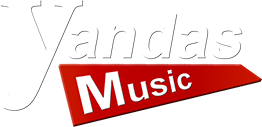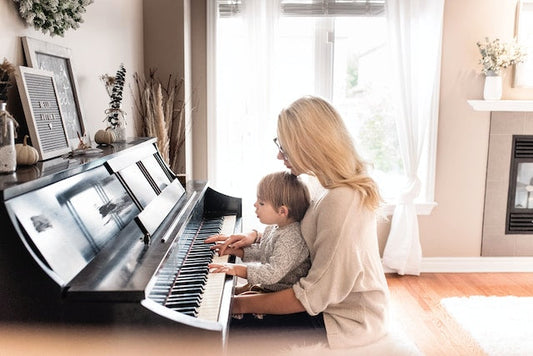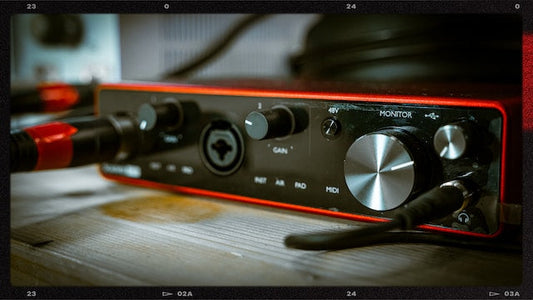7 Tips For Stacking Guitar Drive Pedals

Guitar drive pedal stacking is the fine art of chaining two or more boost / overdrive / fuzz pedals together to create unique tones. Stacking drive pedals offers up an endless variety of sound options in order to cover a lot of sonic territory with just a few pedals. So fire up your amp, strum those six metal wires on your guitar and make the neighbors grouchy! The first rule of drive pedal stacking is "experiment, experiment, experiment." There is no right or wrong approach here. Anytime I'm teaching anything I tell my students "learn the rules so you can break them!"
Quick List Recommended Drive Pedals
- MXR Timmy
- Ibanez TS9 Tubescreamer
- ProCO Rat 2
- Electro Harmonix Soul Food
- Boss BD-2
- JHS Morning Glory
- Xotic RC Booster
- JHS Super Bolt
1. How to set up your amp (clean/edge of break-up/dirty)
Every amp will react differently when pushed by a drive a pedal. Understanding how your amp behaves is the first step in creating that perfect overdriven sound. As the amp changes, your approach to drive stacking should also change.
The Pedal Platform Setup
A "Pedal Platform" amp is a clean amp with a lot of headroom and no breakup. This is a popular route if you're looking to run several drive pedals as it offers the most flexibility. This method also works well with wet effects such as reverb and delay.
Edge Of Breakup
The edge of break-up technique is also very popular. Usually for guys that never like a truly crystal clean sound. The amp is set for break up when playing hard, but can also clean up when playing softer. Hence "edge of breakup". This setup allow for very expressive playing as the amp will react to the player.
High Gain
The full-on distorted lead channel is a bit different. If you use a lighter drive or a clean tone at all you will have to have a channel switching amp. That being said if you use any wet effects like delay or reverb with your amp you either need to dial them in specifically to work with the drive channel or you need an FX loop. All that being said if you are using a full-on distorted lead channel you can use a overdrive such as a TS or a Klon to boost the mids and saturation or the lead channel for even more searing tones.
2. Where to put your boost
Where you put your boost is going to change how it behaves, ultimately affecting the overall tone you achieve.
Example 1: Boost Before Drive
A boost pedal is generally used to "push" the front end of a tube amp a little harder, causing it to breakup naturally or adding a little richness and sustain to a clean tone. When placed in front of an engaged drive pedal, a boost acts more like a gain knob, effecting the saturation of the overdrive. When the drive pedal(s) are off, the boost will act exactly the same but when the drives are engaged the amount of boost needed may be a bit more. In some cases substantially more because the drive pedal is controlling the overall level not allowing the boost to turn the volume up as much.
Example 2: Boost After Drive
This allows the boost to work more naturally as a boost than the prior example. You will also notice the level of volume will be more consistent boosting a clean tone and boosting a dirty tone.
3. Think About EQ Pedal Placement.
This is similar to the boost discussion. If the EQ is first it is going to take much more drastic changes to affect the drive pedals after it. However, if you make drastic boosts to certain frequencies then you can push those and only those frequencies into distorting. This technique can be used to create some very cool sounds and rich texture. If you are after a more typical, overall tone shaping function, simply move the EQ pedal after the drive section.
4. Fuzz First
Not to get too technical, but many Fuzz pedals need the full unbuffered, high impedance signal straight from your guitar, otherwise they might sound... not right. Older style fuzzes and fuzzes that use certain Germanium transistors need to be before all other pedals because the transistors will react to buffers before them and to the loss of signal of having pedals chained before them.
Stacking a fuzz into a drive - muff/screamer
There are plenty of professional players that will run a fuzz pedal into an overdrive mainly for the EQ the overdrive offers more than the drive capabilities. I have seen Steve Lukather of Toto use a Fuzz Face into a Tubescreamer and J Mascis of Dinasaur Jr use a Big Muff into Tubesceamer. By doing this it gives extra girth for solos and lead tones.
5. Two boosts as a DIY drive
This is a fun little trick. If you have two boost pedals you can stack them together and use them as a DIY drive pedal. Play with the order, you will get different results with different pedals in the front vs back. One-knob boosts work great for this but if you have a boost with other options like EQ or Gain then try it! it will still work, differently obviously but that's part of the fun!
This is how it works... run two boosts, one into the second. The one closest to the guitar in the signal will act as your gain, or saturation, while the one closest to your amp will be your volume. Enjoy!
6. Think about amount of gain into gain
Because drive sections are such a large ecosystem, in this section I'm mainly referring to overdrives and distortions. I am also going to refer to them in different "gain stages" and label them accordingly. Those labels will be in amounts of gain from least to greatest, so gain stage one is our lightest and three is our highest.
A Few Examples
For these examples we are going to use three gain stages and number them 1-3 from lowest to highest amounts of gain. We are also going to choose very common readily available pedals on the market. We may touch on some substitutions that can be made however.
Stages 1 - 2 - 3
So this is easy and really common, here we are just going lowest gain to highest. So lets use a MXR-Timmy a Ibanez Tubescreamer (TS9) and a ProCo Rat 2. With these pedals lowest to highest gain would be exactly as mentioned above. By doing it this way the Rat 2 will be your loudest pedal and if you turn up the volume on any of the other pedals while the Rat is engaged it will increase the saturation of the gain more than the volume. Also when you run it this way you will get more gain with every pedal that you stack into the last so it is a good practice to run your gain amounts lower than you may think.
Stages 2 - 3 - 1
I refer to this as the sandwich method since I am sandwiching my highest gain between my two lower gain pedals. By running it this way I can also turn the volume up on my last pedal and use it to boost and add gain to the other two drive pedals and not only add saturation to the gain. So lets use the same three pedals as above and just switch the order; the TS9 into the Rat 2 into the MXR-Timmy. By running it this way you give yourself different options then the first example, neither are incorrect you just have to find the way that suits you best.
Other pedals you can try subbing in for Stage 1 are Klon style pedals, also known as Klon Clones (if ran in the lower gain range, which is a real popular way to do it). The Boss BD-2, the JHS Morning Glory or the Xotic RC Booster.
Other pedals you can sub for Stage 2 are also klon style pedals (but take advantage of the 1k bump in the mids and turn up the gain) The JHS SuperBolt would be great for this as well.
Other pedals you can use for Stage 3 are The JHS Charlie Brown, Angry Charlie, which are in the Marshal high gain vein. There are versions of the Rat you can try like the Walrus Iron Horse, the JAM Rattler or the Big Bear WoodCutter.
7. How Do I Build My Gain Section
I would put everything aside that isn't a drive or distortion pedal and organize them by amount of gain, then I would address boost(s). Are you using one? Two? If two, kill two birds and put one first and one last allowing you to have a master boost, a boost for saturation and you can even do the DIY drive trick. Then I would look at fuzz. Do you use a fuzz? Do you need to? If you do, is it germanium and does it need to be very first in your signal chain? Are you using an EQ? Play with it before or after your main drive section and see what you prefer I would also insert it between your boost(s) and see what you think.
So wether you use two or twenty, using some of these tips to sort out the layout of your Drive Section can be very helpful. If you have some preferred methods you have learned along the way please drop them in the comments below.
| About The Author Miles Margritz | miles@yandasmusic.com Miles is a certified pedal junkie who also serves as our online customer service representative. He loves talk to shop so give him a call! |



